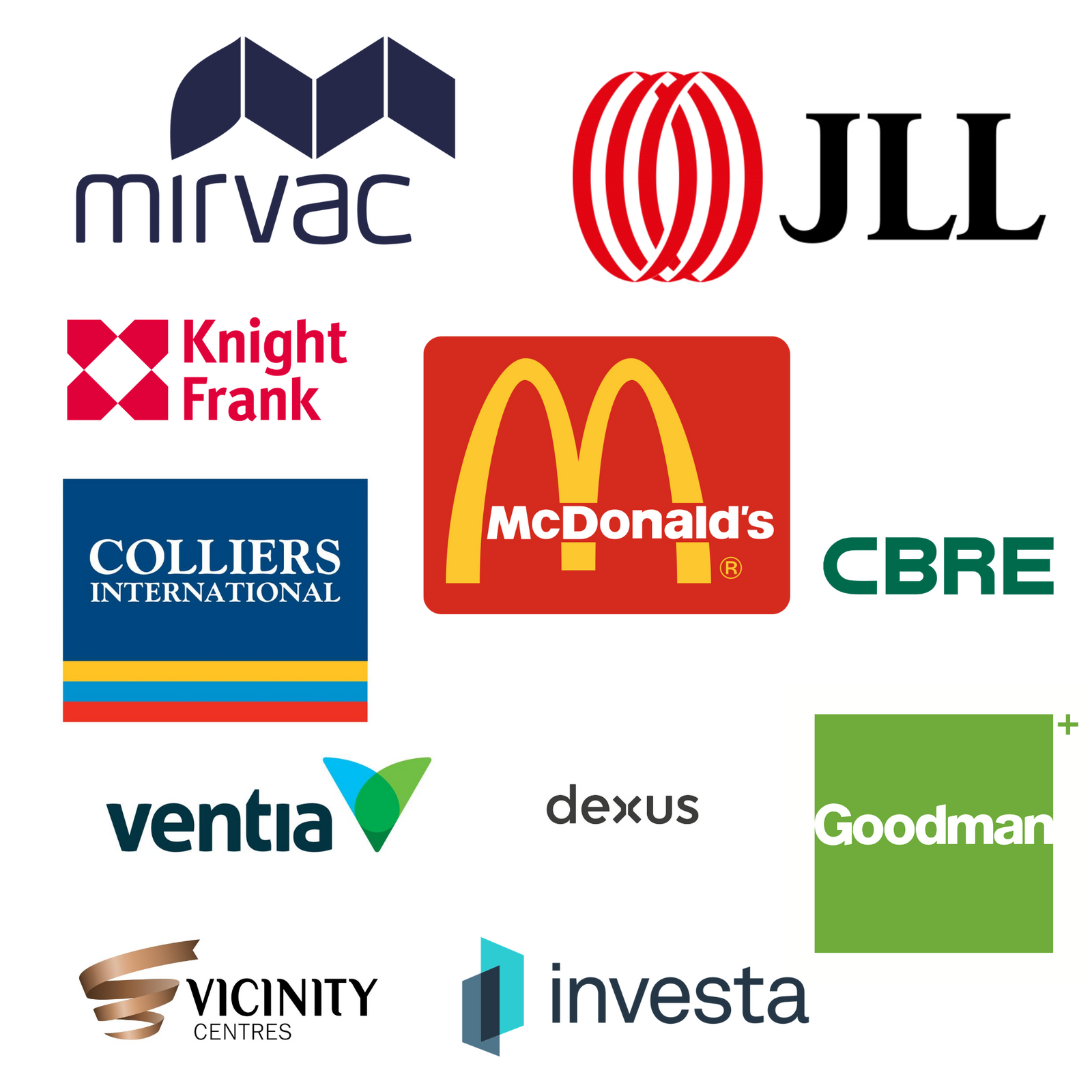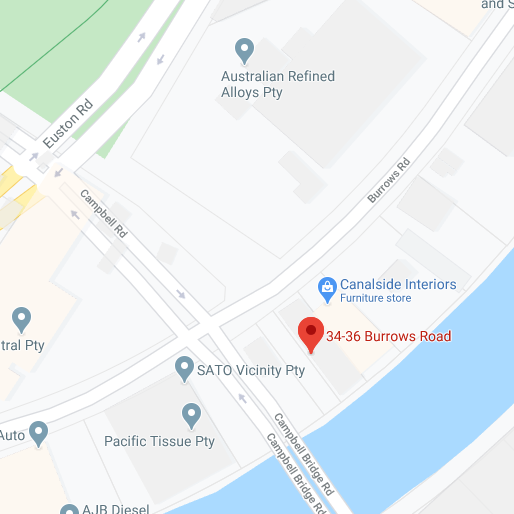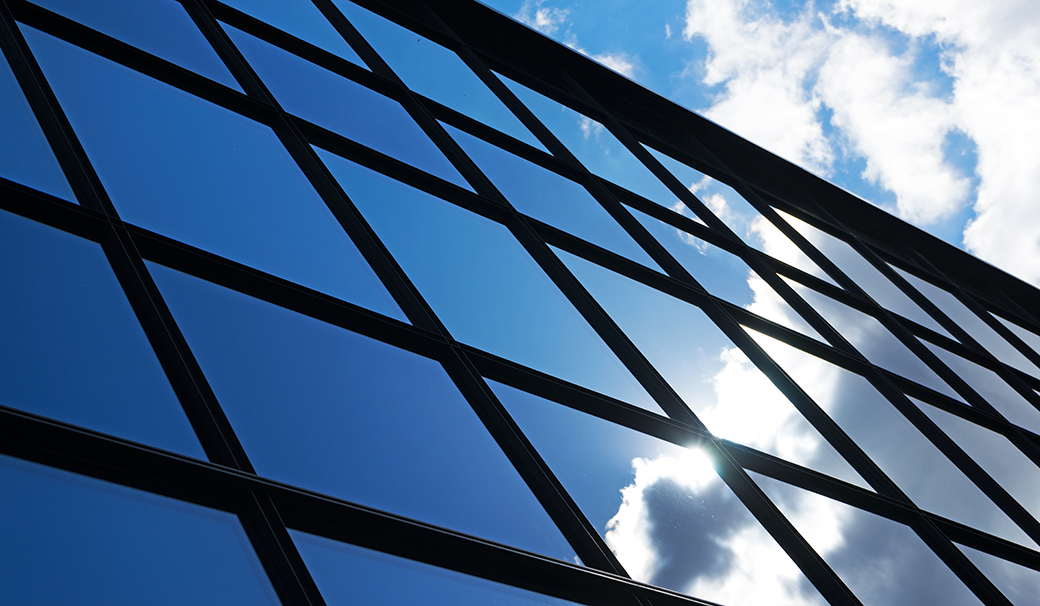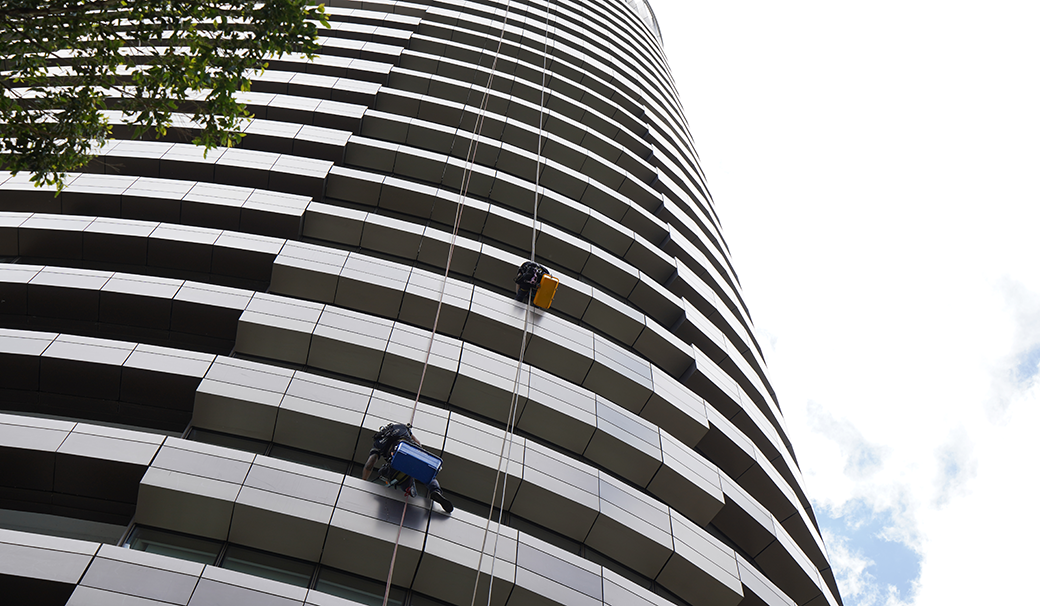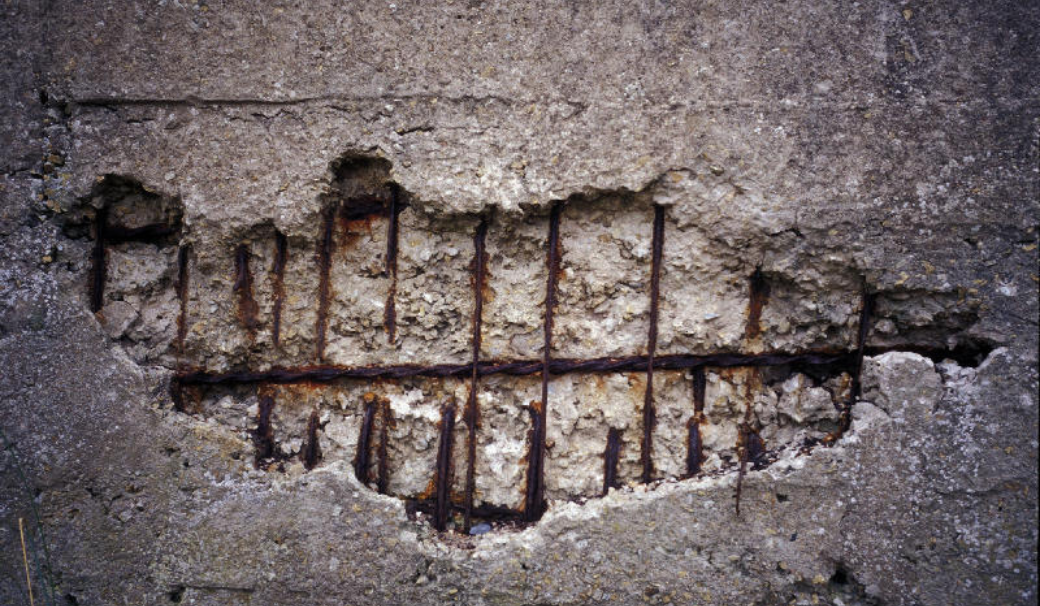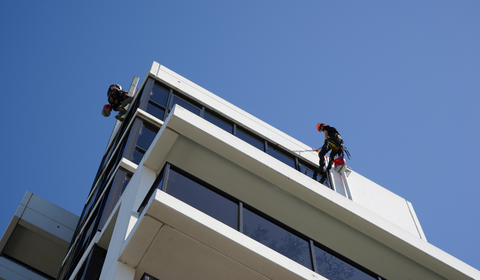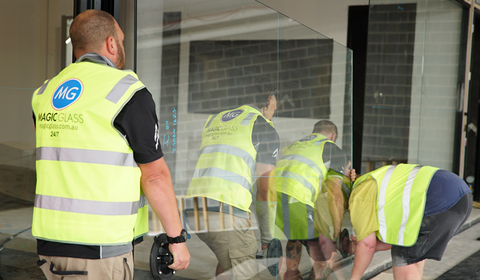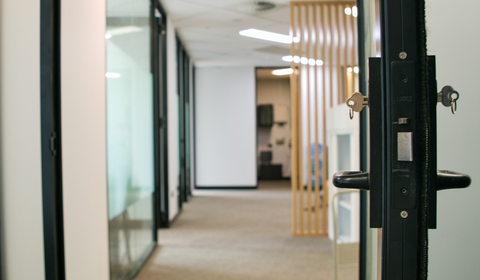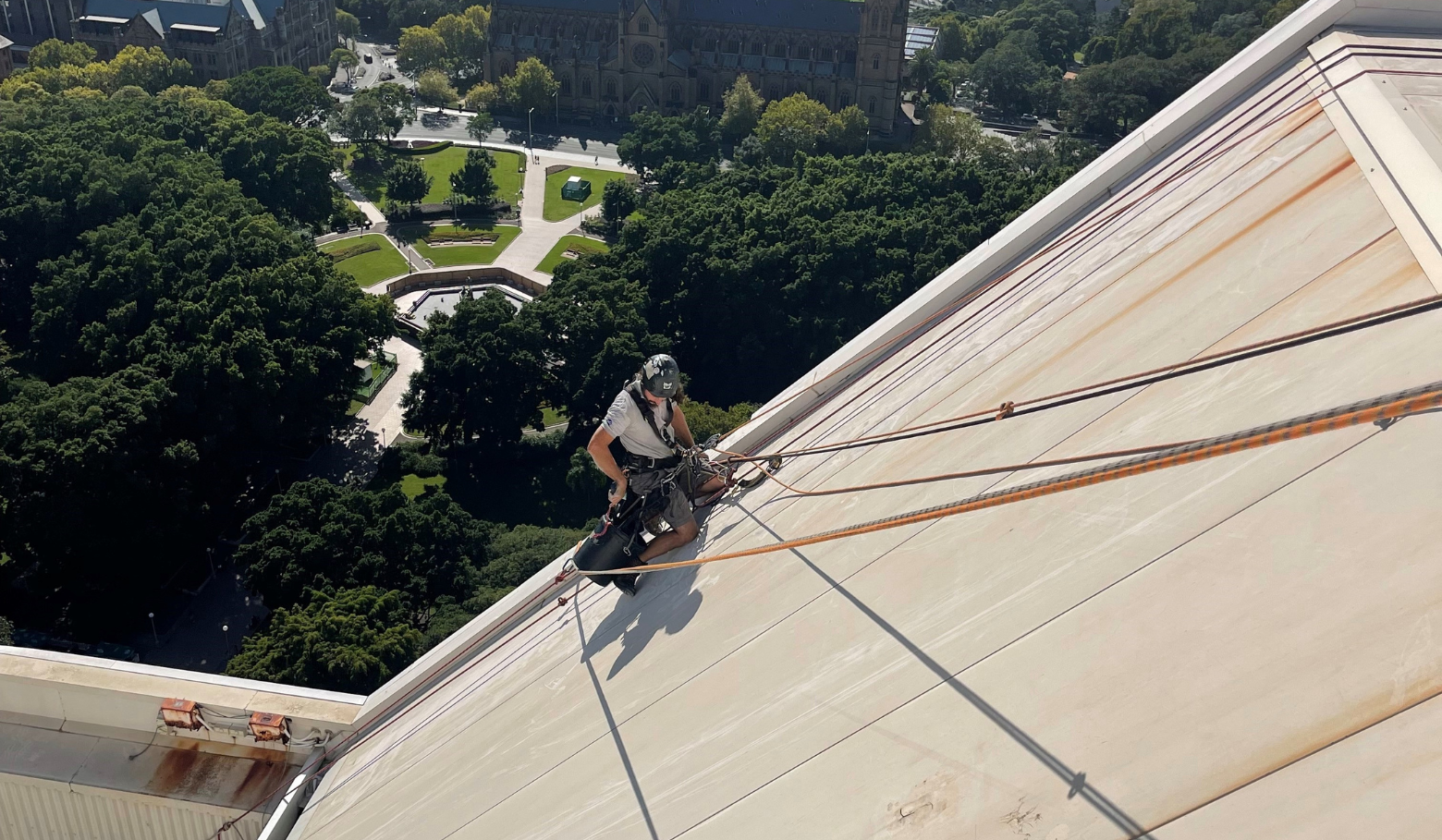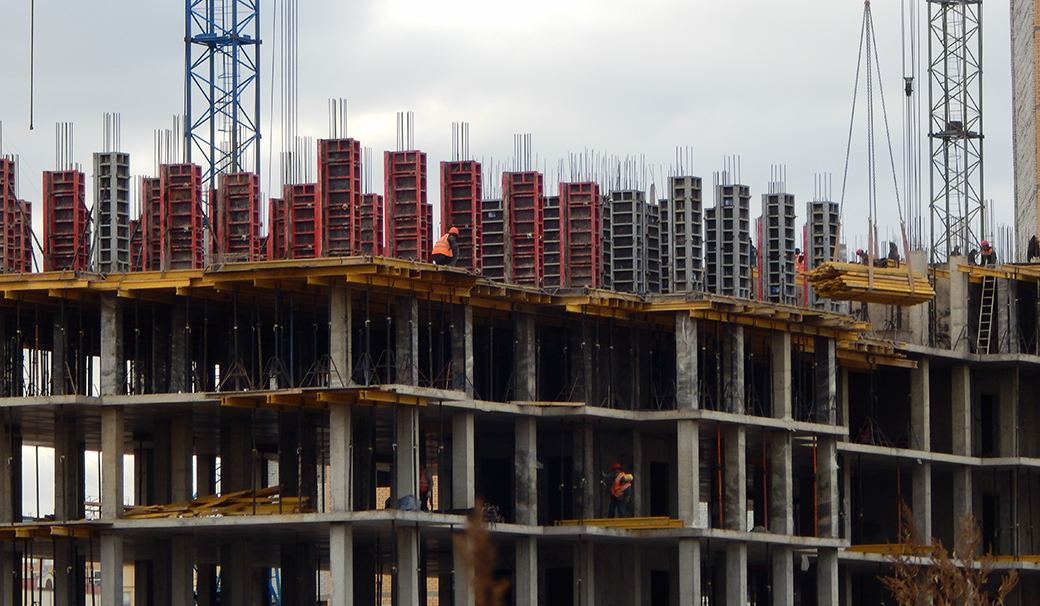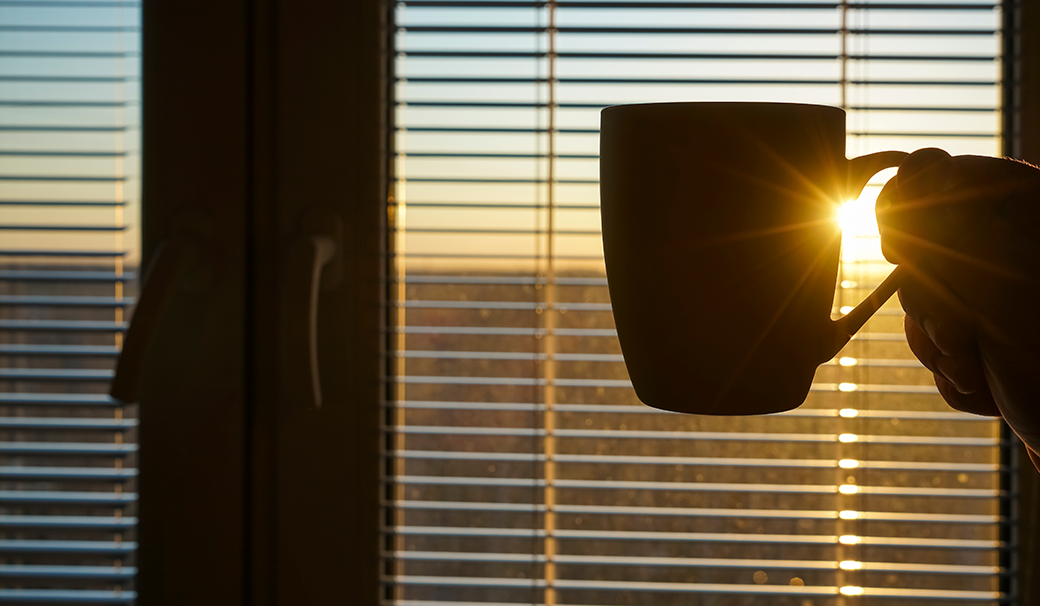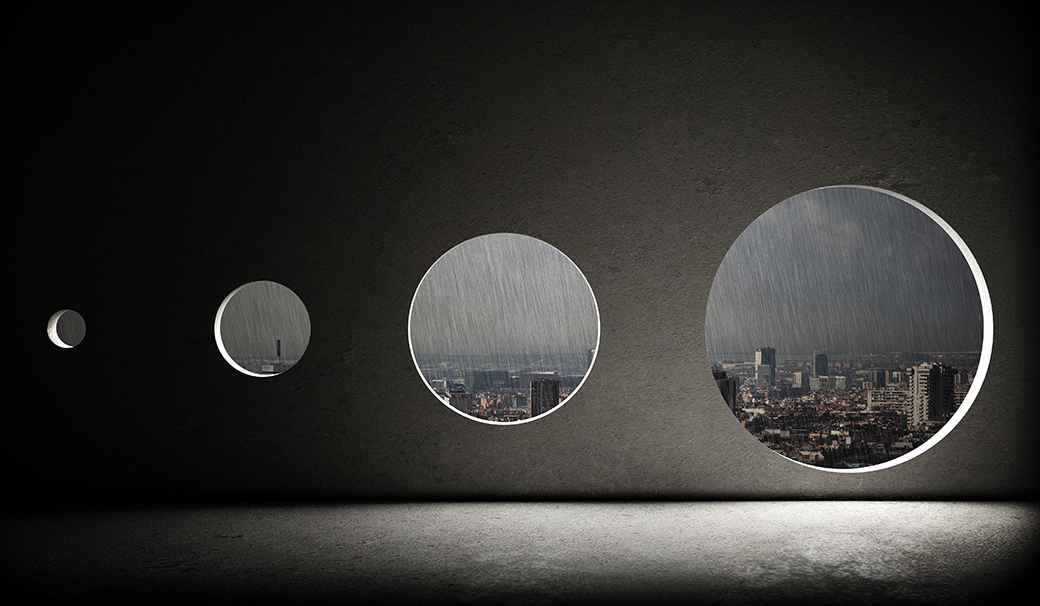Glass Blog
If you own or manage a high-rise building, it is your responsibility to make sure it is inspected thoroughly and regularly. This will ensure your building is safe for all inhabitants and passer-byers, and prevent the need for expensive restoration and repair work as a result of unnoticed and untreated structural maladies.
Failure to get your high-rise building inspected regularly can result in severe structural complications that can inflict injury, cause mortalities, and leave Building Managers and Owners liable for negligence.
Read on to learn more about what building inspections are and why they are important.
What are High-Rise Building Inspections?
A building inspection is a routine inspection of the property. It is carried out by an accredited professional to identify any existing or potential issues with the structural stability of the building. Most inspections will include an assessment of the building’s foundation and roofing, exterior walls and facade, and height safety installations.
Why Do High-Rise Buildings Need Regular Inspections?
High-rise buildings are particularly susceptible to safety breaches. Ensuring your building is inspected regularly will therefore give you the best chance of making sure your building is in compliance with all relevant safety regulations. It will also prevent the occurrence of catastrophic building defects that can be hazardous to residents, workers, and the general public alike.
In addition, regular high-rise inspections can help identify and treat any minor issues before they become serious. This can prevent any major disruptions and expenses associated with major structural repairs and restorations, and increase the value of your property.
How Often Should High-Rise Buildings Be Inspected?
How often your building should be inspected is dependent upon a number of factors such as its age and environment.
In order to get an accurate idea of how often you should be having your building inspected, we recommended you get in touch with the Magic Glass team. We’ll be able to advise you on when you should get your building inspected, as well as provide you with a free quote.
Our Magic Glass Rope Access Division can carry-out thorough external building inspections quickly and with minimal-disruption. We can also perform high-rise window and facade cleaning, height safety installations, remedial repair works, and facade painting and waterproofing services.
Contact us today for more information.
Rope access is a relatively new form of access method that more and more businesses are beginning to employ. Because it’s so new and often perceived as ‘scary’, many people have questions surrounding rope access and its uses.
Fortunately, Magic Glass is here to answer some frequently asked questions about rope access.
What is Rope Access?
Rope access is a form of work positioning that allows workers to access difficult - to - reach areas without the need of scaffolding or aerial work platforms . It involves the use of ropes and harnesses to support the worker as they complete the required job.
Why Use Rope Access?
There are a multitude of reasons why rope access is becoming more commonly used. These include:
- Increased safety
- Increased versatility
- Less disruption to the building
- Increased efficiency
- More cost - effective
What are the Applications of Rope Access?
Rope access is most commonly used in the construction industry. It can be used for:
- Structural inspections of buildings
- Height safety insta llations
- High - rise window and facade cleaning
- Concrete repair
- Painting and waterproofing
- Glass repair and replacement
- Signage installation and removal
Can Anyone Become a Rope Access Technician?
In order to become a Rope Access Technician you must undergo mandatory IRATA training to become certified.
Magic Glass Rope Access Division
Our Rope Access Division can offer a number of services such as:
- External window and facade cleaning
- Height safety installation
- Make safe services
- Facade inspection and reporting
- Facade remedial repair
- Safety and debris netting
- Bird proofing and pest control
- Rust removal
- Facade painting and waterproofing
- Signage installation and removal
And more!
To get a free quote on your rope access job, contact Magic Glass today.
Concrete spalling can occur on a wide variety of structures including concrete buildings, car parks, bridges, jetties, and tanks. It can have disastrous effects on the structural integrity and asset value of buildings and can pose serious threats to the health and well-being of occupants.
Having a basic understanding of what concrete spalling is and how it is treated will help you identify and remedy any spalling that may occur in or around your building.
What is Concrete Spalling?
Concrete spalling is the deterioration of steel reinforced concrete. It can be caused by a number of things including excessive exposure to moisture, oxygen and salts, freeze thaw cycling, and exposure to fire. The most common cause of spalling, however, is corrosion of the steel reinforcement bars.
Factors such as age, maintenance, concrete quality, depth of concrete coverage, and local environmental conditions have significant effects on the likelihood of concrete spalling occurring. For example, older buildings, buildings located by the sea, and buildings that are not maintained sufficiently are much more susceptible to concrete spalling.
What are the Effects of Concrete Spalling?
Concrete spalling can have a number of detrimental effects on the aesthetics, structural integrity, and safety of your building. It is an eyesore and can make your building appear poorly maintained and insufficiently cared for. This can deter potential buyers and renters for residential buildings and can impact business reputations for commercial buildings.
Spalling can also be harmful for workers, building occupants, and passer - byers. Mild concrete spalling can lead to falling debris and tripping hazards, whilst more severe cases can cause structural instability which can be even more dangerous.
From a commercial perspective, concrete spalling can also greatly reduce the asset value of your building. Maintenance costs increase as spalling becomes more widespread, so the longer you leave concrete spalling untreated, the more expensive remediation will be and the more your building will diminish in value.
How Do You Identify Concrete Spalling?
The tell-tale sign of concrete spalling is the flaking and chipping of concrete surfaces. If you notice large chunks of concrete missing or falling off any of your building’s surfaces, it can be safe to assume your building is experiencing spalling.
How Can You Prevent Concrete Spalling?
There are some measures that can be taken to prevent the occurrence of concrete spalling. These include:
- Proper management of concrete during pouring to ensure adequate coverage and sufficient concrete curing techniques
- Prevention of excess water in the concrete mixture
- Use of an effective anti-carbonation and chloride ion resistant coating system
- Application of water sealant to concrete surfaces to prevent water from getting into the concrete.
How Can Concrete Spalling Be Repaired?
If your building has succumbed to concrete spalling, there are a number of ways you can go about repair and restoration. For mild spalling, you may be able to repair the concrete with patching and coating, for more severe cases, however, you may need to have your concrete resurfaced or completely replaced.
If you do notice any signs of concrete spalling, you should get in contact with a professional.
At Magic Glass, we offer building remediation services at-heights and in hard-to-access areas. Our experienced Technicians will be able to inspect and repair your concrete spalling issues regardless of where they are occurring.
Get in contact with our team for more information.
If you’re a property owner or strata manager, it is your responsibility to ensure your building is kept in good condition. This not only ensures that your building is looking good, but also ensures that it is safe for its occupants and the general public, alike.
An important step in doing this is getting regular facade inspections.
Regular facade inspections are critical in maintaining the safety and visual appeal of buildings. They can identify potential issues before they become major structural complications, in turn, saving you money and drastically reducing the risk of injury and mortality. Regular inspections can also improve the aesthetics and value of your property.
Facade inspections regularly pick up issues that cannot be seen from the ground and could be potentially dangerous if not fixed, such as cracked render and concrete.
It is generally recommended that building owners and managers get their property’s facade inspected every 5 years if their building is in excellent condition. If it is in fair condition, it should be inspected every 2-3 years, and if it is in poor condition, it should be inspected yearly.
If you notice any physical signs of deterioration, such as cracks, rust stains, deterioration around balconies, and displacement of stone, concrete blocks or bricks, you should get your building inspected immediately.
For facade inspections of both commercial and residential buildings, contact the Magic Glass team. Our experienced Rope Access Technicians can conduct thorough and efficient external property inspections for high-rise buildings of all sizes.
Call us today for a free quote.
Safety glass is a type of glass that is designed to be less likely to break and less likely to inflict serious injury in the rare event it does break. The two main types of safety glass include toughened (or tempered) glass and laminated glass.
One of the most common questions we get asked is ‘which type of glass is the safest?’ Although toughened glass is most commonly recommended for safety, it does ultimately come down to what it is being used for.
Toughened Glass
Toughened glass is manufactured through the use of thermally or chemically controlled treatment processes. It is these processes that strengthen the glass and make it more resistant to force.
Although it is very difficult to break toughened glass, it’s not impossible. In the rare event breakage does occur, toughened glass shatters into many smaller pieces rather than large, sharp shards of glass. Because of this property, it is much safer than standard, annealed glass and is significantly less likely to inflict injury. This is why toughened glass is often used in motor vehicle windows and diving masks.
Toughened glass is also Grade A safety glass and is therefore frequently used in areas and spaces where compliance with Australian Glass Safety Standards is a must. This includes schools, hospitals, low-level glazing, aged care facilities, and child care centres.
Laminated Glass
Laminated glass is composed of two pieces of glass with an interlayer commonly made from polyvinyl butyral. This prevents the glass pieces from shattering as they remain stuck to the interlayer rather than breaking off into sharp shards.
As laminated glass sticks together even when it is shattered, it provides much greater security against potential break-ins, severe weather, and sudden impact. Because of this, laminated glass is most commonly used in shopfronts, windows and doors, balustrades, and glass fencing.
If you’re wanting to install safety glass into your commercial or residential building and are still unsure which type is best for you, give Magic Glass a call! Our friendly team will be able to provide you with recommendations and point you in the right direction when it comes to installation.
We can also provide you with a free quote for custom safety glass fabrication and installation.
Aluminium windows and doors are becoming increasingly popular among home and business owners alike.
From durability to safety, these windows and doors offer an abundance of benefits. Here are our top 6.
1. High Durability
One of the main benefits of aluminium windows and doors is that they are highly durable. They are resistant to the elements and don’t rust.
In addition, they are structurally stronger than other materials such as timber, and are hence recommended for buildings in high-wind areas.
2. Low Cost
Aluminium has a much lower upfront cost than both timber and uPVC (unplasticized polyvinyl chloride).
Due to its low maintenance nature and energy efficient properties, aluminium windows and doors will also save you money in the long run.
3. Aesthetic Appeal
Aluminium framed windows and doors are also generally more aesthetically pleasing. They are used often in contemporary architecture as they give buildings a sleek and modern look.
Additionally, aluminium frames can be easily tailored to even the most challenging specifications and can be easily customised in terms of colour and finish.
4. Energy Efficient
In recent years, aluminium has significantly improved in terms of insulation and thermal performance.
When coupled with insulated or double-glazed glass, aluminium windows and doors can greatly reduce temperature loss and minimise cold draughts in your home. This not only improves thermal control, but also helps save you money on your energy bills.
5. Low Maintenance
Aluminium windows and doors are very low maintenance and easy to look after. They do not rust or discolour and you can get away with cleaning them only twice a year with soap and water.
6. Bushfire Safety
When it comes to fire resistance, aluminium windows and doors are your best bet. They offer a much higher BAL (Bushfire Attack Level) rating than alternative materials and are also more resistant to flame damage.
If you live in an area that is high-risk for bushfires, installing aluminium doors and windows is a very good idea.
If you’re considering installing aluminium doors or windows into your home, you should give Magic Glass a call. We will be able to advise you on your options and come up with a solution that suits you and your needs.
- Aluminium Door Glass Replacement
- Aluminium Door Services
- Aluminium Framed Windows
- Aluminium Sliding Windows
- Aluminium Window Services
- Aluminium Windows Glass Replacement
- Aluminium Windows Installation
- Door Frames
- Door Installation
- Energy Efficient
- Glass Door Replacement
- Glass Doors Installation
- Magic Glass
When it comes to working at heights, implementing effective safety procedures is a must. Falls from heights are the second leading cause of work-related mortalities within Australia, so ensuring your building or worksite is secure and has preventative measures in place is critical.
The most common types of height safety systems are fall arrest and fall restraint systems. Although they are commonly used interchangeably, they have a number of key differences. Read on to find out more.
Fall Arrest Systems
Fall arrest systems are designed to protect workers in the event of a fall. When a worker falls, the arrest system will catch them, preventing the occurrence of injuries or deaths.
Fall arrest systems fall into two categories - personal and general. Personal fall arrest systems involve specific Height Safety PPE and attachment systems, such as harnesses and ropes. General fall arrest systems protect all workers as a whole rather than individually, such as safety nets and catch platforms. Both types of fall arrest systems should prevent workers from falling no more than two metres.
Examples of fall arrest systems include:
- Full-body harnesses
- Suspension belts
- Rope lanyards
- Safety nets
- Catch platforms
Fall Restraint Systems
Fall restraint systems are preventative safety measures. They are designed to prevent falls altogether, rather than catching workers after they have fallen.
Examples of fall restraint systems include:
- Guardrails
- Walkway systems
- Static restraint lines
These restraint systems are used for lower-risk situations, where falling is less likely or less hazardous.
Having effective fall protection systems in place is an absolute necessity in preventing workplace injuries and deaths.
If you’re unsure about your requirements or what fall protection equipment you should be using for your building or worksite, get in contact with Magic Glass for more information.
Whether your building is high-rise, low-rise, commercial or residential, chances are that it has faced some kind of building defect. More often than not, these defects are minor, however it is still important that they are remedied in order to prevent further damage and the occurrence of injury.
Read on for 5 common building defects that all property owners should be aware of.
1. Poor Roofing Materials
Poor roofing materials can lead to leaks, rusting, and erosion. Not only are these things detrimental to the visual appeal of your building, but they can also cause severe structural damage if left unresolved.
2. Drainage Issues
Problems with drainage often come up due to boycotted water outlets. When a gutter is blocked, it can affect the entire structure of a building and lead to future failures if not quickly addressed. Even bad rainwater drainage systems can result in leaks that can potentially ruin the walls and reduce the quality of the building structure.
Another common issue is blocked weep holes preventing water from being able to escape from a facade and causing leaks internally.
3. Structural Complications
These are the defects that you can find on the foundations of the house, such as wall cracks and misplaced wall posts. Structural complications should be addressed immediately as they can be a serious hazard to the health and livelihood of your building’s inhabitants.
4. Waterproofing Problems
These are defects related to poor drainage, leaking roofs, and any other problems related to poor waterproofing. As waterproofing problems can lead to structural complications, they need to be remedied as soon as possible.
5. Facade Defects
Facade defects occur on the exterior of a building. They include defects such as brick cracks and concrete spalling. Often these defects occur naturally through exposure to moisture or harsh weather conditions.
If you encounter any signs of these defects in or around your building, give Magic Glass a call. Our dedicated Rope Access Technicians can remedy all external building defects, regardless of the size and height of your building.
Proper maintenance of your building’s exterior is critical not only in terms of visual appeal, but also in terms of safety and functionality. Conducting facade inspections, cleaning and repairs can be a complex and time-consuming process, however. Fortunately, the use of rope access can make facade maintenance much more simple.
What is Rope Access?
Rope access involves the use of ropes and harnesses to traverse the exterior of buildings to conduct inspections, repairs, removals, installations, and cleaning services.
Due to strict training requirements and safety standards, rope access is considerably safer than alternative access methods such as the use of scaffolding and cranes.
Why is Rope Access Ideal for Facade Maintenance?
Aside from being the safest access method, rope access is also a faster, less-disruptive, and less-expensive method of carrying out facade maintenance work.
With little set-up and pack-up times, rope access drastically reduces the time it takes to carry-out facade work. This, in turn, cuts costs associated with labour and equipment and makes the process much more straight-forward.
In addition, the lack of scaffolds, platforms and cranes makes rope access a much more subtle process. This reduces disruption to your building and its inhabitants and won’t compromise your building’s visual appeal.
Rope access is also much more ideal for facade maintenance as it provides workers with greater mobility and flexibility to move around the building. This allows them to reach more difficult-to-access areas with very little restriction from equipment.
If you’re wanting to make the change to rope access, get in contact with the Magic Glass team today. Our dedicated Rope Access Division offers an abundance of services that will keep your building’s facade clean, safe and functional.
- Anchor Point Installation
- Building Maintenance
- Commercial Glass Replacement
- Commercial Glass Services
- Commercial Glazier
- Commercial Glazing
- Facade Cleaning
- Facade Maintenance
- Facade Services
- Glass Maintenance
- Glass Services
- Glazing Services
- Hi-Rise Glass
- High Rise Glass Services
- Magic Glass
- Rope Access
- Window Cleaning
When it comes to reducing noise pollution, many people choose to install soundproof glass into their windows and doors. Before doing this, however, it is important to weigh-up your options as there are different types of soundproof glass, all of which have various pros and cons.
The two main types of soundproof glass are double-glazed and laminated glass.
Double-glazed glass is simply glass panels that have two panes instead of one. The space between the two panes is filled with either air or argon to further insulate the panel.
The pros of double-glazed glass is that it’s very energy efficient, weather resistant and soundproof. The main con, however, is that it can be expensive to double-glaze your windows.
Laminated glass is similar to double-glazed glass in that it is manufactured using two panes. The space between these panes is filled with PVB (polyvinyl butyral), a type of resin that is highly effective in blocking out sound.
Similarly to double-glazed glass, laminated glass is energy efficient, weather resistant and soundproof. It’s also effective in blocking out UV rays.
Laminated glass is challenging to install, however. Not installing it properly will result in it being less effective in both thermal control and soundproofing.
Both types of glazing have similar STC (Sound Transmission Class) ratings, so what it ultimately comes down to is price and convenience. Laminated glass is cheaper, however there are challenges with installation so you should always seek the help of a glazing professional.
If you’re wanting to further soundproof your building, get in touch with the Magic Glass team today. We can custom-make and install both double-glazed and laminated glass panels that will aid significantly in blocking external sound.
- Commercial Glass Installation
- Commercial Glass Replacement
- Commercial Glass Services
- Custom Cut Glass
- Custom Glass
- Custom Glass Installation
- Double Glazed Windows
- Energy Efficient
- Glass Cut to Size
- Glass for Home
- Glass Installation
- Glass Pane
- Glass Replacement
- Glass Services
- Glass Solutions
- Glass Walls
- Laminated Glass
- Office Space
- Shopfront
- Toughened Glass
- Window Services
The use of Low-E coated glass has been a game changer in boosting the energy efficiency of buildings. With an estimated 70% of energy loss occurring through windows and doors, and 90% of window energy loss occurring through the glass, Low-E coatings have helped drastically in keeping heat in or out of commercial buildings and houses.
What is Low-E Glass?
Low-E (or low-emissivity) glass is designed to minimise the amount of infrared and UV radiation absorbed by glass, without reducing the amount of light entering the building.
The glass has a very thin, transparent coating that reflects heat back inside or outside the building. This helps keep the temperature in your building consistent by reflecting the internal temperature back inside.
Types of Low-E Coatings
There are two different types of Low-E coatings. Which one is best for you is based predominantly on your area’s climate.
Hard-Coat (Passive) Low-E Coatings
Hard-coat Low-E coatings are applied to glass immediately after it is removed from the furnace. The heat causes the coating to fuse onto the glass as it is cooling down. The fusion creates a strong bond (or hard-coat) that is highly durable.
Hard-coat Low-E glass is used predominantly in climates where the temperature can get extremely low. This is because the hard-coat glass allows some of the sun’s short-wave infrared energy to pass through, whilst keeping the long-wave heat energy inside. This keeps buildings nice and warm when it is cold outside.
Soft-Coat (Solar Control) Low-E Coatings
Soft-coat Low-E coatings are applied to pre-cut glass in a vacuum chamber once the glass has cooled. This type of coating must be sealed in an insulated glazing unit (IGU) or laminated glass unit for longevity and optimal performance.
Soft-coat Low-E glass has lower emissivity and higher solar control performance. It has better UV protection and is overall more effective. For this reason, it is ideal for use in cold to hot climates where it can reflect the warm or cool air back into your building, with minimal leakage outside.
Installing Low-E glass into your home or business can significantly improve your building’s energy efficiency, in turn reducing your carbon footprint and saving you money. It can also prevent damage to your furniture and internal decor by blocking out harmful UV rays.
If you’re considering upgrading to Low E glass, contact the Magic Glass team today! We can provide you with a free quote and help advise you on what options are best for your building.
- Commercial Glass Replacement
- Commercial Glass Services
- Custom Glass
- Custom Glass Installation
- Energy Efficient
- Glass Company
- Glass for Home
- Glass Options
- Glass Replacement
- Glass Services
- Glass Solutions
- Glass Window Replacement
- Glazing Services
- Residential and Commercial
- Sydney Glass Company
- Window Replacement Service
- Window Services
Whether it’s rain, wind or shine, harsh weather conditions can have significant effects on your building. Strong winds, rain and hail can cause breakage to glass whilst exposure to sunlight can cause UV rays that penetrate glass panels and damage items inside.
It is therefore important to take necessary precautions in protecting your glass windows and doors from harsh weather. Our guide on 4 Ways to Protect Your Glass from the Elements will help you get started .
Safety Glass
A great way to take precaution against weather damage is to invest in safety glass for your windows and doors. Safety glass is designed to withstand high - impact forces and extreme weather conditions, including strong winds, high-powered storms, and fluctuating temperatures.
They are often also effective in filtering UV rays, protecting the interior of your home from sun damage and boosting your home’s energy efficiency by keeping the heat out.
There are different types of safety glass, including tempered and laminated glass. To find out which is best for you and your property, read our Laminated VS Tempered Glass blog.
Security Film
Security window film is an easy and affordable way to protect your windows from weather damage. These films are made of a pliable Myler coating that is applied to the inside of your glass. They help the glass withstand larger forces and prevent glass from shattering dangerously.
Security films can be tinted, mirrored or coloured and are also effective at blocking out harmful UV rays.
Storm Windows and Doors
Storm windows and doors involve installing a second window or door panel over an existing one. They provide protection from extreme weather conditions by reinforcing windows, without replacing the existing glass.
They are a good option if you’re seeking a cost-effective method to prevent weather damage that’s more effective than security film.
Storm Shutters
Storm shutters are a type of protective shutter that attaches to the outside of a window. They are effective in protecting the window from strong winds, rain, hail, and sunlight.
Storm shutters are a popular choice for homeowners as they can be folded or rolled away so you can still enjoy your view. They are also more cost-effective than completely replacing your glass with safety glass.
Look for shutters made of aluminium, aluminium-wrapped foam, or reinforced fabric.
If you’re wanting to take precaution against weather damage, give Magic Glass a call. We can advise you on the best safety glass options for your building and can also help in the event of glass breakage caused by weather. Call us on 18 000 GLASS.
- 24 Hour Emergency Glass Repairs
- 24 Hour Emergency Glass Services
- 24 Hour Glazing Service
- After Hour Glass Replacement
- Australia Window Regulations
- Broken Window
- Damaged Window
- Emergency Glass Repair Service
- Emergency Glass Replacement Service
- Emergency Glass Services
- Glass Film Coverings
- Glass for Home
- Glass Maintenance
- Glass Repair
- Glass Repair Service
- Glass Services
- Laminated Glass
- Safety Glass
- Toughened Glass
- Window Services



